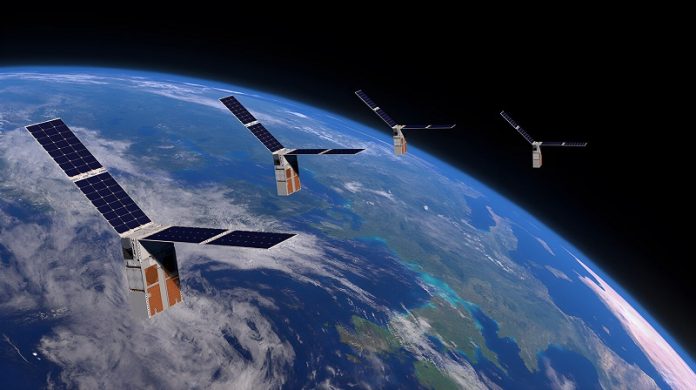
In the future, instead of relying on large and costly individual satellites, groups of smaller satellites—known as a “swarm”—will work together to achieve greater accuracy, flexibility, and autonomy in space.
Researchers at Stanford University’s Space Rendezvous Lab have taken a significant step towards this vision by completing the first-ever in-orbit test of a system that allows a swarm of satellites to navigate using only visual information shared through a wireless network.
The test, called the Starling Formation-Flying Optical Experiment (StarFOX), involved four small satellites working together in space.
These satellites used cameras to capture visual data and calculate their positions and movements.
The results of this test were recently presented at the Small Satellite Conference in Logan, Utah, where experts on swarm satellites gathered to discuss the latest advancements.
Simone D’Amico, an associate professor of aeronautics and astronautics at Stanford and senior author of the study, described this achievement as the culmination of over a decade of work.
“This is a major milestone for our lab,” said D’Amico. “Starling is the first demonstration ever made of an autonomous swarm of satellites.”
For years, D’Amico’s team has been working to push the boundaries of distributed space systems, where multiple satellites work together to accomplish tasks that would be difficult or impossible for a single satellite.
The benefits of this approach include improved accuracy, better coverage, more flexibility, and the ability to take on new challenges that haven’t even been imagined yet.
Navigating a swarm of satellites is no small feat. Currently, most satellites rely on the Global Navigation Satellite System (GNSS) and need regular communication with systems on Earth.
However, these systems are limited, especially beyond Earth’s orbit, and they can’t help satellites avoid obstacles like space debris.
D’Amico’s team aimed to create a navigation system that allows a swarm of satellites to operate autonomously, without relying on external systems.
This is possible with today’s technology, thanks to miniaturized cameras and other affordable hardware. The cameras used in the StarFOX test are standard 2D cameras called star-trackers, which are already found on many satellites.
The StarFOX system uses these cameras to take visual measurements from each satellite in the swarm.
By observing known stars in the background, the system can determine the positions and movements of the satellites.
This process is similar to how sailors used sextants to navigate the seas by measuring angles between stars and the horizon.
The StarFOX system relies on three key algorithms developed by Stanford’s Space Rendezvous Lab. The first algorithm processes images to detect and track objects, including other satellites and space debris.
The second algorithm estimates the general orbit of each satellite based on these observations. The third algorithm refines these calculations over time, allowing the swarm to navigate more accurately and even avoid collisions.
This successful test marks a significant step forward in the development of autonomous satellite swarms, paving the way for future space missions that are more efficient, cost-effective, and capable of handling complex tasks in space.



